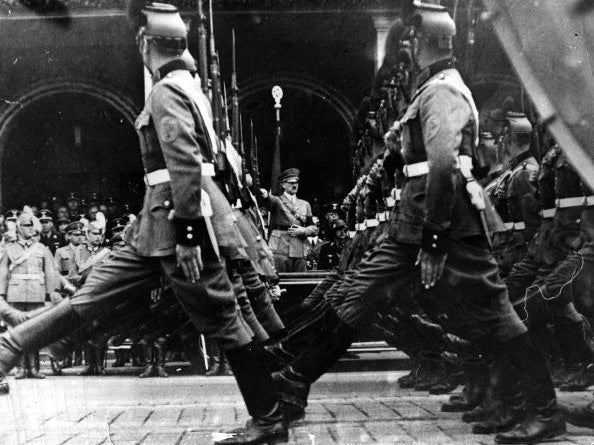Hitler secretly made the weapons of the future during the Second World War
This week marked the 76th anniversary of the German invasion of Poland and the beginning of the Second World War

Hitler's Nazi engineers made technological developments which were innovative and far ahead of their time, manufacturing weapons such as sonic cannons, x-ray guns and land cruisers.
The magazine Weapons of WWII has exhibited some of Hitler's secret Nazi weapons in its Autumn 2015 issue.
The Fritz X, one of Hitler’s most secret bombs, is widely considered to be the grandfather of today's smart bomb.
The glide bomb was radio guided and carried over 700lbs of explosives. It was capable of hitting strongly protected targets such as battleships and heavy cruisers.
It could penetrate 28in of armour and could be deployed from 20,000ft, meaning it could be out of reach for antiaircraft equipment at the time.
The "flying wing" bomber was designed to carry 2,000lbs of armaments while flying at 49,000ft above ground level and travelling at speeds north of 600mph.
First flown in 1944, the Horten Ho 229 was the world's premiere stealth aircraft, equipped with twin turbojet engines, two cannons, and R4M rockets.
The Nazis allocated half a million Reich Marks to manufacturing the plane which has inspired modern stealth aircrafts such as the Northrop Gruman B-2 bomber.
The Goliath tracked mine, known as "Doodlebugs" or beetle tanks to the Allies, was controlled with a joystick and powered by electric motors or gas burners.
The miniature tanks could carry between 133 and 220lbs of high explosives and were used to navigate minefields and attack heavy vehicles and fortifications. This Nazi innovation paved the way for today's radio-controlled weapons.
The Messerschmitt Me 163 Komet, a rocket-powered jet with speeds of up to 700mph, was the fastest jet in the War by a difference of over 250mph.
The plane's immense speed was so far ahead of its competitors, in fact, that it was fast enough to avoid Allied gunners but it was too fast to hit Allied aircraft.
Subscribe to Independent Premium to bookmark this article
Want to bookmark your favourite articles and stories to read or reference later? Start your Independent Premium subscription today.

Join our commenting forum
Join thought-provoking conversations, follow other Independent readers and see their replies